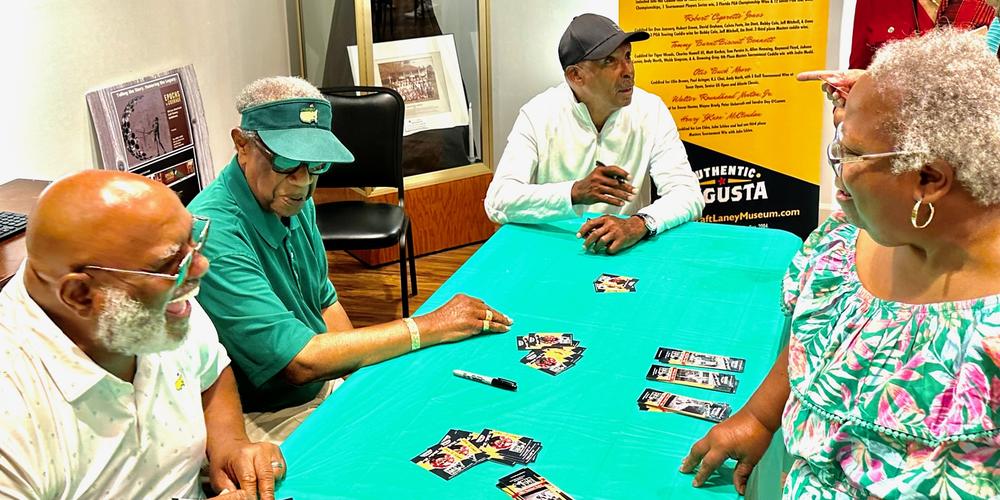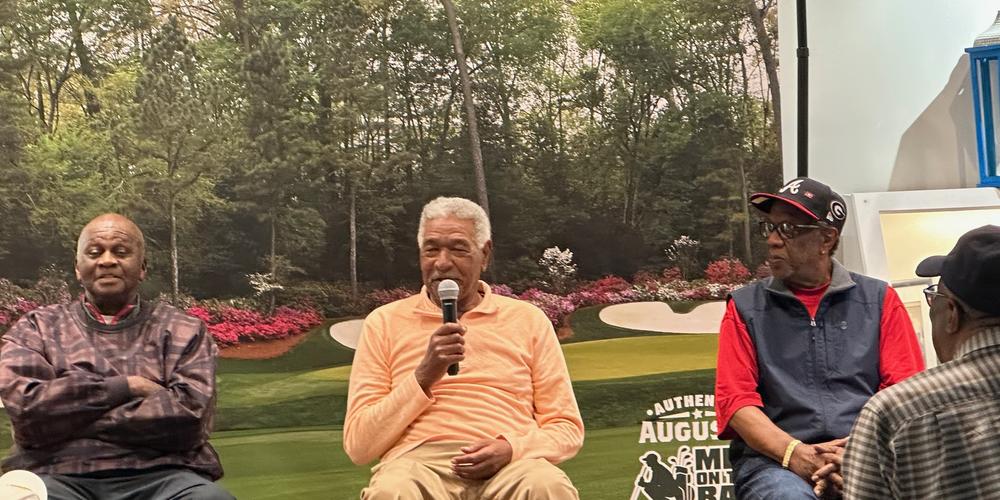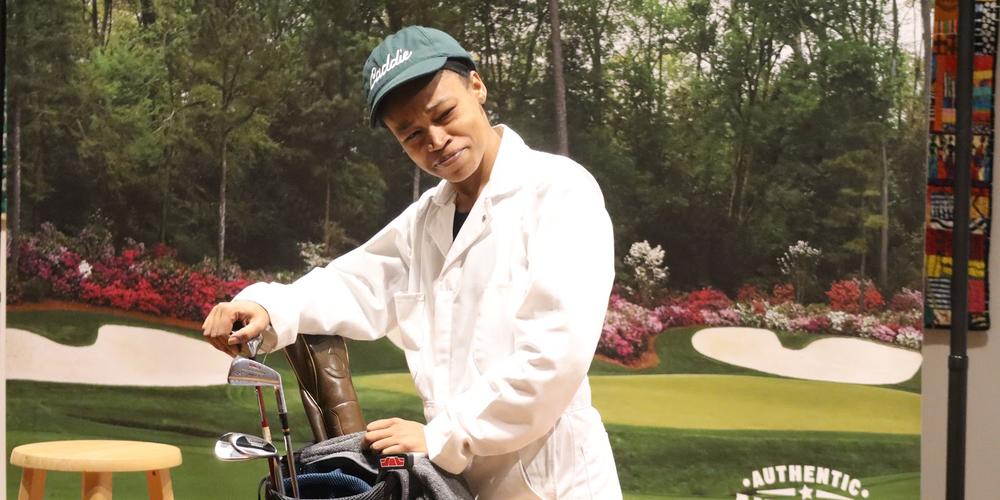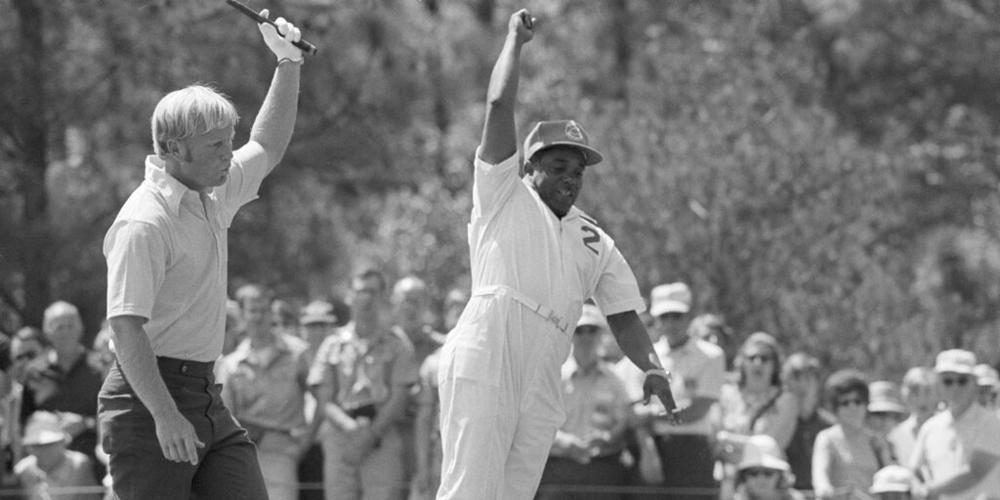
Caption
(L-R) Ike "Stabber" Choice, Henry "JNox" McClendan and Tommy "Burnt Biscuit" Bennett. Bennett caddied for Tiger Woods during Woods' first appearance at The Masters, when he was an amateur.
Credit: The Lucy Craft Laney Museum of Black History

Caption
(L-R) Henry "Buck" Moore, Jim "Big Boy" Dent and Henry "JNox" McClendan
Credit: The Lucy Craft Laney Museum of Black History

Caption
Actor Keyonice Burts portraying caddie Willie "Pappy" Stokes
Credit: The Lucy Craft Laney Museum of Black History

Caption
Jack Nicklaus throws up his putter as his caddy, Willie Peterson leaps into the air after his putt sank for a birdie on the first hole at Augusta, Ga., April 11, 1971, during the Masters Golf Tournament. With this putt Nicklaus took the lead of the final round with 8-under-par.
Credit: AP Photo/Perry Aycock





